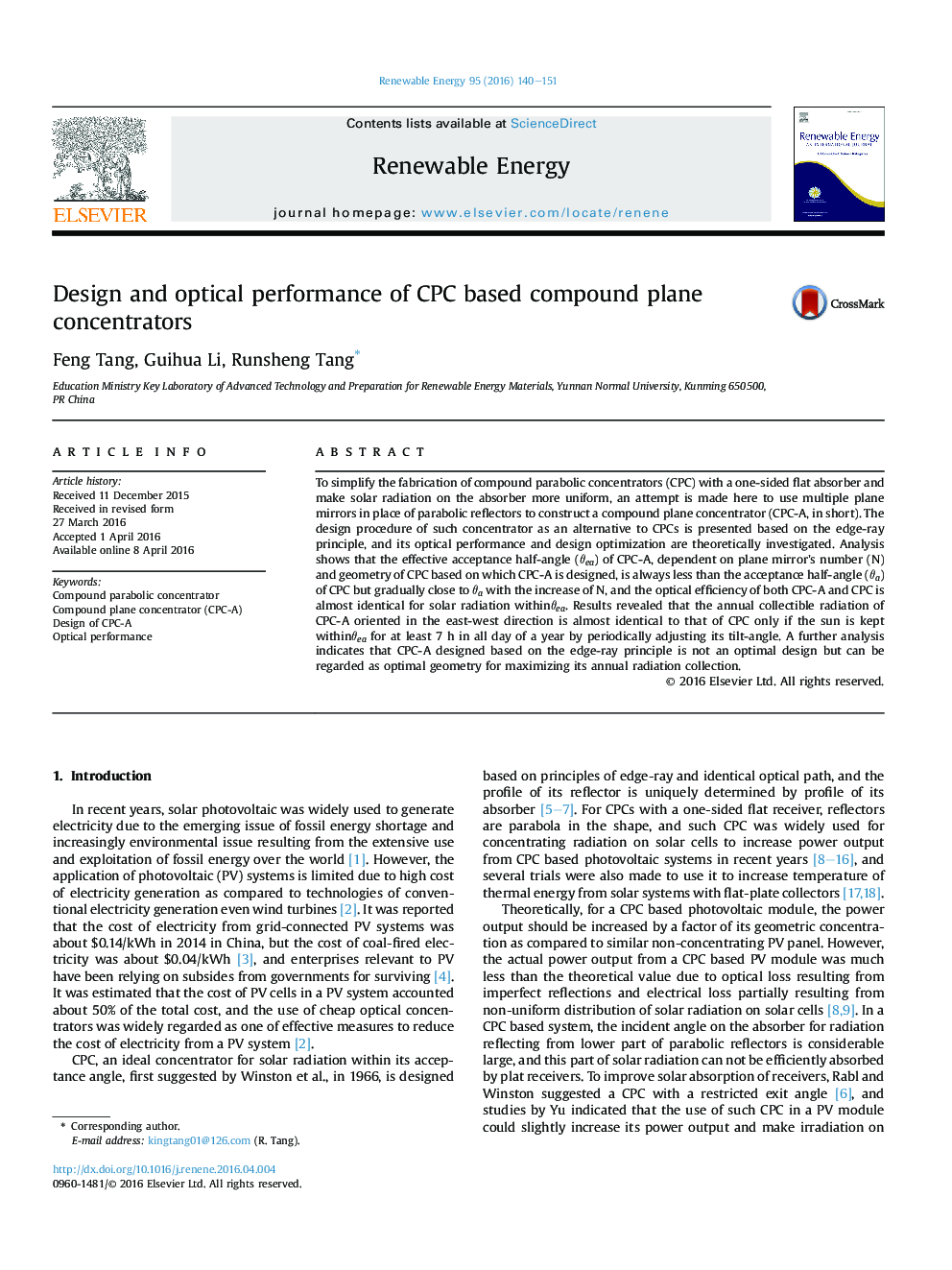| Article ID | Journal | Published Year | Pages | File Type |
|---|---|---|---|---|
| 299688 | Renewable Energy | 2016 | 12 Pages |
•Design procedure of CPC based compound plane concentrators (CPC-A) was suggested.•The design of CPC-A with θea = 14° and 18° was addressed in details for design considerations.•Optical performance comparison between CPC-A and CPC was performed.•Optimal geometry of CPC-A for maximizing its annual radiation collection was investigated.
To simplify the fabrication of compound parabolic concentrators (CPC) with a one-sided flat absorber and make solar radiation on the absorber more uniform, an attempt is made here to use multiple plane mirrors in place of parabolic reflectors to construct a compound plane concentrator (CPC-A, in short). The design procedure of such concentrator as an alternative to CPCs is presented based on the edge-ray principle, and its optical performance and design optimization are theoretically investigated. Analysis shows that the effective acceptance half-angle (θea) of CPC-A, dependent on plane mirror's number (N) and geometry of CPC based on which CPC-A is designed, is always less than the acceptance half-angle (θa) of CPC but gradually close to θa with the increase of N, and the optical efficiency of both CPC-A and CPC is almost identical for solar radiation withinθea. Results revealed that the annual collectible radiation of CPC-A oriented in the east-west direction is almost identical to that of CPC only if the sun is kept withinθea for at least 7 h in all day of a year by periodically adjusting its tilt-angle. A further analysis indicates that CPC-A designed based on the edge-ray principle is not an optimal design but can be regarded as optimal geometry for maximizing its annual radiation collection.
